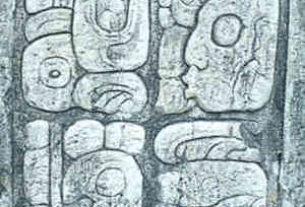This is one of the most enjoyable fiction “reads” I’ve had in a long time. It’s simply good straightforward storytelling complete with interesting and likeable characters and a good basic plot situation.
It is founded on an actual incident in relations between the U.S. and Mexico when, in 1916, Pancho Villa’s bandidos, led by Antonio Salazar, raided the small town of Columbus, New Mexico. The border between the two countries in those times was a more tense and seemingly less well-defined place at the beginning of the century. Certainly there was less coming-and-going between the two countries then.
In any event, a force of Mexicans struck the town, killed a number of citizens, burned buildings and grabbed as much loot as they could carry before being repulsed by the locals. In the process they kidnapped the daughter of a prominent rancher, Frank MacPherson, as she was escaping from a burning building.
When the dust settles MacPherson’s longtime ranch foreman, James Hampton, volunteers to follow the bandidos across the border deep into Mexico. Thus the action unfolds and there’s quite a bit of it before the end.
James Hampton quickly becomes the central character of the narrative along with Mary Wells whose fate at the hands of her abductors is described in alternating chapters. Along the way we find that Hampton has always had a yen for Mary, hence his eagerness to give chase.
Hampton also has two other characters with him. One is a long-time friend, Bud Tyler. The other is Reuben Satterwhite, the young nephew of Mary’s father. The foray into Mexico is a kind of coming-of-age event for him.
I found Hampton a completely likeable and admirable man and we discover the complexities of his character as the three men continue their pursuit of the Mexicans deep into hostile territory. Indeed, I found all the characters likeable and understandably described for us. This reader, however, found it unclear what the three of them would do when they eventually caught up with their prey.
I may be mistaken but I didn’t detect any hidden symbolism or psychological complexity in this tale. As we readers all know, many novels leave us with the unsettling feeling that we haven’t quite grasped all the profundity that was unfolded for us. In this case however I was happy to sit back and enjoy Fleming’s good clean straight ahead story-telling.
There are some good descriptions of the inevitable encounters with the bad guys. And Mary’s fate at the hands of Antonio Salazar’s minions, both male and female, is movingly described. And, in the process, Mary emerges as a rather gutsy character.
I think that’s all I should say about the story line.
In reading this novel I found myself thinking of the action as taking place sometime way back in the past. It came as a bit of a shock when, about halfway through the narrative, we find an aeroplane being mentioned. Back in Columbus, where the clean-up is taking place, the U.S. Army is building a landing strip to fly in some reinforcements. It’s also a bit of a surprise to be reminded at one point that World War I was being fought on the other side of the ocean.
David Fleming, who teaches creative writing in Texas, has done a wonderful job of describing life in the New Mexico border region less than a century ago and has given us some wonderful characters to help tell his tale.
In my humble O: If you appreciate good straightahead storytelling give this one a try.
Border Crossings
By David L. Fleming
Texas Christian University Press 1993
Available from Amazon Books: Hard Cover/Paperback

